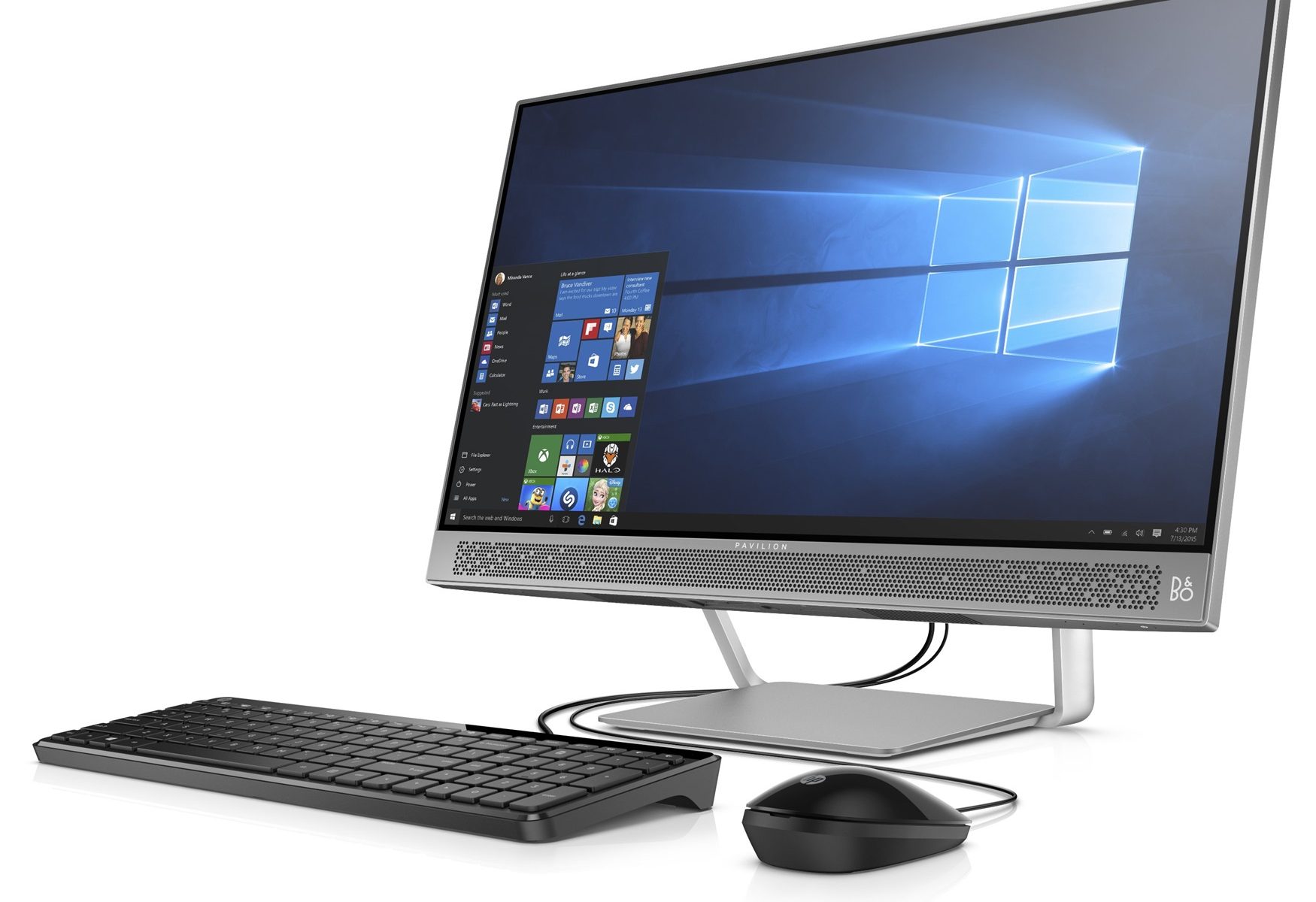One of the newer hardware platforms that we’ve seen come out lately is the All-In-One Desktop platform. We’ve worked on a few of these recently, and thought we’d put some thoughts down for any customers looking to upgrade.
Coming from popular brands like HP, Dell, Lenovo, ASUS, and more, All-In-One desktops have become popular for many reasons. With a reasonable price point, compact design, and energy-saving schematics, we can definitely see the appeal. Here are a few pros and cons that we’ve found…
Pros
Basically ready to run out of the box, these systems are excellent for those that may be technologically challenged. The only required peripherals that need connections are a keyboard and mouse, and you’re ready to go! The systems we used had plenty of power, and some neat additions like facial recognition for Windows login. An additional option of having touch screen controls would be a huge selling point as well, especially with the new design of Windows 10 app-based setup. With a thin, streamlined case that was just a little larger than a typical monitor and minimal cooling fans, this is the most ergonomic, quiet, and visually-appealing computer setup we’ve seen in a while.
Cons
Flexibility is virtually nonexistent with these systems, as updating and changing hardware would be quite a bit more burdensome than with a typical computer tower desktop. Replacing a hard drive has the added challenge of ensuring that any replacement parts are made specifically for this formfactor, as well as upgraded built-in peripherals like adding a video card would not be an option. One model we worked on did not have a built-in optical drive, so installing drivers from a CD or DVD / repairing or reinstalling a Windows installation could only be performed from a portable, bootable USB or external hard drive. Any more serious computer repairs that involve access to the motherboard like resetting a CMOS or replacing a bad stick of RAM have the potential, depending on the company, of voiding any warranty by opening the case, assuming again that there are no proprietary access systems like Apple chooses to use (custom screwheads, etc). Repairs typically will involve shipping the entire system back to the manufacturer, which can be quite a bit more expensive than having us come out to perform a computer repair at home.
Overall, with the robustness of these systems, we still would recommend these to friends and family as a great low-cost to high performance computer system.

